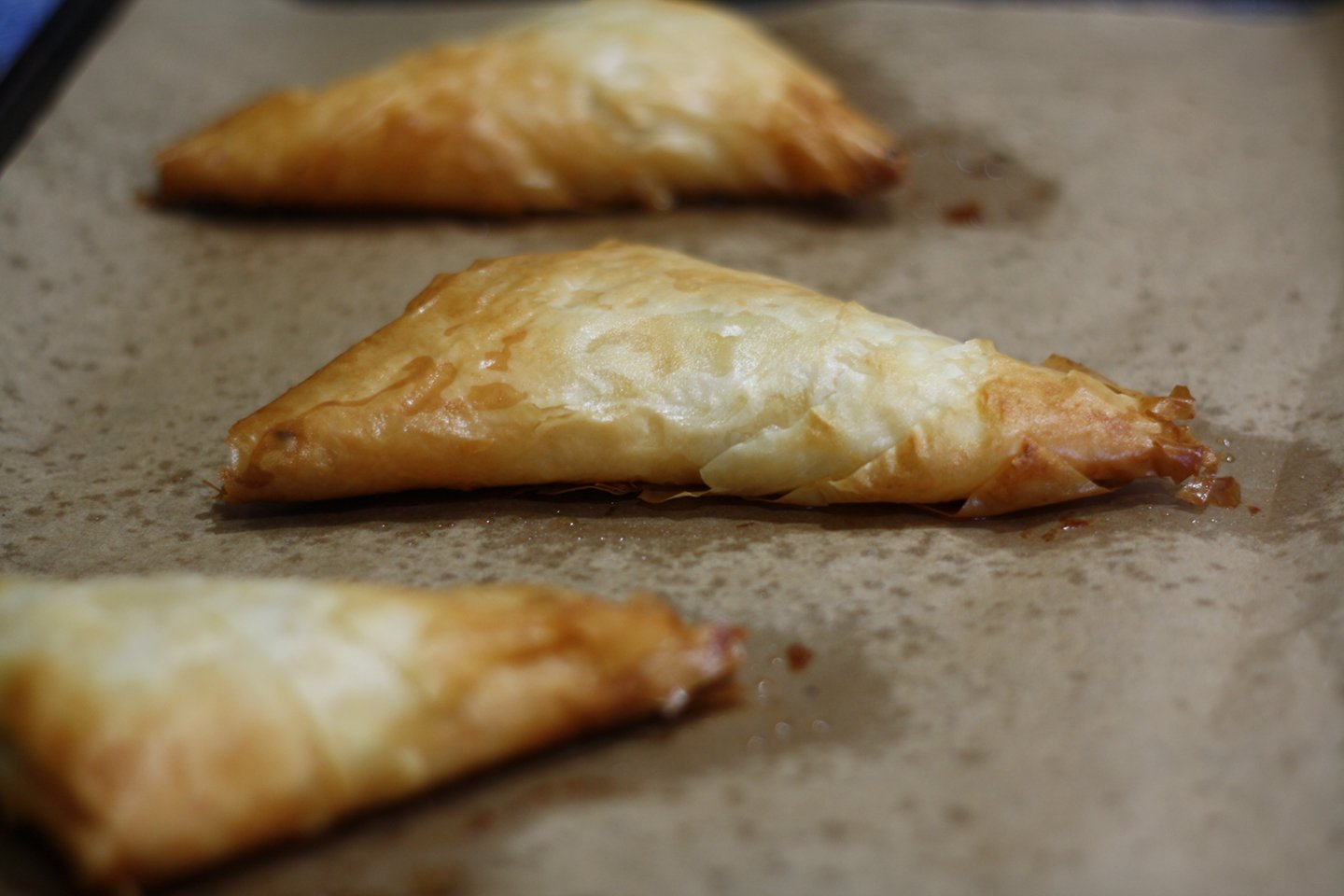
Episode 62: Things Wrapped in Filo Dough
Cocktail hour - what’s on our minds
Phyllo Dough
Cheddar
Phyllo Dough | Baking Processes | BAKERpedia.
PHYLLO FACTS - The Washington Post
Focus On Phyllo Pastry - Great British Chefs
Everything You Need to Know About Phyllo Dough
Homemade Phyllo (Phyllo) Dough Recipe - The Spruce Eats
https://www.wisconsincheese.com/about-cheese/how-is-cheddar-cheese-made
comes from Greek φύλλο 'leaf'
In Turkish, it is called yufka 'thin',
Dough is made with alcohol and acid
Lightly enriched
Well developed gluten followed by an overnight rest.
Apparently achieving the thinness desired is much easier using a pasta machine
There are at least a couple different origin ideas
the Turks with inventing phyllo about 1,000 years ago, noting that at that time the Turks ate a thin unleavened bread, fried on a simple iron sheet, called yufka.
Some credit the Greeks, saying it was first mentioned as a bread and walnut sweet in Homer's "Odyssey," written around 800 B.C.
Another story is phyllo actually originated in China and worked its way west.
perhaps the ancient Egyptians developed it.
Cheddar Quoogles
Cheddar cheese is named for Cheddar in Somerset, the area in England where the cheese originated around the 12th century.
Cheddar starts off like nearly every other cheese: cheesemakers add rennet to cow's milk to curdle it and then separate the solid curd from the liquid whey.
But after the curd is heated, it goes through a process called cheddaring where the cheese is cut into slabs that are repeatedly stacked atop one another and turned.
The cheddaring process removes more moisture, acidifies the curd, and gives the cheese its unique, elastic texture and pungent flavor.
The curd is then pressed into molds and left to age. Mild cheddar cheese is generally aged 3 to 6 months, while sharp or extra sharp cheddar may be aged 6 months to 18 months or more.
Originally, the diet of cows providing the milk for cheddar cheese was rich in beta-carotene which gave the cheese an orange tint, and the color became associated with quality cheddar cheese.
Today, cheddar cheese is naturally white or off-white.
The only difference between white cheddar vs orange cheddar cheese is that cheesemakers use an additive like annatto to give orange cheddar its color.
Recipe Source
Making it up as we go
Ingredients
8 Oz Goat cheese
1 Jar Kalamata Olives
Pine nuts
4 oz Cheddar cheese
1-2 Green Apples or any tart apple
8 Oz Feta
8 Oz Frozen Spinach, Defrosted drained and chopped
1 bunch Dill (This could also cross over into the tea party repisode, dill is good with beets!)
2 packs (?) Phyllo Dough
1 sticks Butter
Olive Oil
Salt
Pepper
Equipment
3+ Bowls
Pastry Brush
Sheet Pan(s)
Parchment paper
Sharp knife
(2) Mesh Strainer
Steps
ITEMS WE HAVE ALREADY DONE:
Prep Cheese
Crumble feta and Goat
Grate Cheddar
Defrosted Dough
Defrosted, drained and chopped spinach
Cut up our apples
Chopped our Olives
Toasted our Pine nuts (If we add this to the Goat cheese Olive thing)
Cook the apples
Warm some butter in a pan and add the apples
Cook until the apples are quite soft,
Place cooked apples in a mesh strainer to drain.
Make fillings
Spanakopita Filling
Mix together spinach, feta, and dill.
Apple Cheddar Filling
Once apples have cooled, stir in cheddar cheese
Goat cheese with Kalamata Olives (and pine nuts?)
Mix goat cheese with prepped olives
Melt butter and prepare dough
Lay 1 sheet of dough out on a work surface.
Brush with butter, lay another sheet on top.
Repeat until desired thickness is achieved.
Make Items
Bake Items
